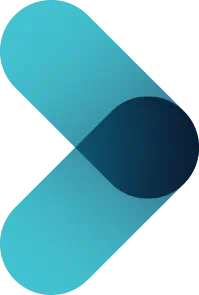GIVE NOW before 2025 ends—your gift will be doubled to help children in need. Click here to 2x your impact!

Ranked nationally in pediatric care.
Arkansas Children's provides right-sized care for your child. U.S. News & World Report has ranked Arkansas Children's in seven specialties for 2025-2026.

It's easier than ever to sign up for MyChart.
Sign up online to quickly and easily manage your child's medical information and connect with us whenever you need.

We're focused on improving child health through exceptional patient care, groundbreaking research, continuing education, and outreach and prevention.

When it comes to your child, every emergency is a big deal.
Our ERs are staffed 24/7 with doctors, nurses and staff who know kids best – all trained to deliver right-sized care for your child in a safe environment.

Arkansas Children's provides right-sized care for your child. U.S. News & World Report has ranked Arkansas Children's in seven specialties for 2025-2026.

Looking for resources for your family?
Find health tips, patient stories, and news you can use to champion children.

Support from the comfort of your home.
Our flu resources and education information help parents and families provide effective care at home.

Children are at the center of everything we do.
We are dedicated to caring for children, allowing us to uniquely shape the landscape of pediatric care in Arkansas.

Transforming discovery to care.
Our researchers are driven by their limitless curiosity to discover new and better ways to make these children better today and healthier tomorrow.

We're focused on improving child health through exceptional patient care, groundbreaking research, continuing education, and outreach and prevention.

Then we're looking for you! Work at a place where you can change lives...including your own.

When you give to Arkansas Children's, you help deliver on our promise of a better today and a healthier tomorrow for the children of Arkansas and beyond

Become a volunteer at Arkansas Children's.
The gift of time is one of the most precious gifts you can give. You can make a difference in the life of a sick child.

Join our Grassroots Organization
Support and participate in this advocacy effort on behalf of Arkansas’ youth and our organization.

Learn How We Transform Discovery to Care
Scientific discoveries lead us to new and better ways to care for children.

Learn How We Transform Discovery to Care
Scientific discoveries lead us to new and better ways to care for children.

Learn How We Transform Discovery to Care
Scientific discoveries lead us to new and better ways to care for children.

Learn How We Transform Discovery to Care
Scientific discoveries lead us to new and better ways to care for children.

Learn How We Transform Discovery to Care
Scientific discoveries lead us to new and better ways to care for children.

Learn How We Transform Discovery to Care
Scientific discoveries lead us to new and better ways to care for children.

When you give to Arkansas Children’s, you help deliver on our promise of a better today and a healthier tomorrow for the children of Arkansas and beyond.

Your volunteer efforts are very important to Arkansas Children's. Consider additional ways to help our patients and families.

Join one of our volunteer groups.
There are many ways to get involved to champion children statewide.

Make a positive impact on children through philanthropy.
The generosity of our supporters allows Arkansas Children's to deliver on our promise of making children better today and a healthier tomorrow.

Read and watch heart-warming, inspirational stories from the patients of Arkansas Children’s.

Hello.

Arkansas Children's Hospital
General Information 501-364-1100
Arkansas Children's Northwest
General Information 479-725-6800


Flat Skull? Ridge on the Head?
When Does a Baby's Head Shape Need a Closer Look?
Published date: March 08, 2023
Updated date: July 20, 2025
Sagar Mehta, M.D., the director of the craniofacial team at Arkansas Children’s and an assistant professor of Surgery in the Division of Pediatric Plastic and Reconstructive Surgery at the University of Arkansas for Medical Sciences, said his team is always willing to answer questions from parents concerned about their child’s skull.
“If you’re worried about a kid’s head shape, we’re always happy to see them in our clinic. We are very welcoming to all sorts of consults because we understand that it’s something unknown and rare.”
What is Craniosynostosis?
The skull is made up of five bones that fuse as a child gets older. The spaces or gaps between those bones are called sutures. Having gaps between the skull bones allows a child’s brain to grow. Over time, the sutures join together and become one solid bone to protect the brain. For kids born with craniosynostosis, some of those gaps fuse too early, putting pressure on the brain and preventing it from growing.Signs and Symptoms of Craniosynostosis
The most obvious sign of craniosynostosis are a misshapen head. Depending on which gaps have fused too early, a child’s head may look flattened on the back side, long and narrow, or triangular. A child may have a ridge on their skull or a broad, short head.
In very young children, other signs include:
- Waking in the night crying or screaming, often called “night terrors”
- Head banging, especially when crying
- Developmental delays
“It’s hard for a kid less than two or three years old and is non-verbal to say, ‘Mom, there’s pressure on my head.’ They’re not going to complain of headaches,” Mehta said. “What they’re going to be doing is things like rubbing their head against your shoulder for an extended time and being subdued or lethargic.”
As children get older, symptoms can include:
- Delayed speech
- Eye or vision problems
- Learning difficulties
- Neurocognitive issues
- Headaches
When assessing a child for craniosynostosis, our pediatric craniofacial specialists first do a physical exam, checking to see if the typical soft spots on a baby’s skull are absent or if there are clear ridges on the head. Often, a flat portion of the skull is a common condition called benign positional plagiocephaly, which will either correct itself over time or can be corrected non-surgically with a specially designed helmet. A CT scan or skull X-ray can confirm the diagnosis if craniosynostosis is suspected.
Treatment Options for Craniosynostosis
Each case of craniosynostosis differs in severity. Some can be treated non-surgically, especially if diagnosed early while the skull bones are still soft. When the condition is identified before the bones have hardened – usually before 4 months old – a minimally-invasive surgery called an endoscopic strip craniectomy can correct the issue. After the surgery, the skull is shaped and healed over time with either cranial springs or helmets molded specifically to the child’s head. The helmet is adjusted regularly to reshape the skull.Arkansas Children's Hospital has an orthotics team on site, allowing families to get treatment needs met at one location if helmeting is preferred. To meet the needs of families who may have difficulty traveling to a helmeting center once a week, our craniofacial team specializes in using cranial springs to reshape the skull after the surgery. Springs inserted into the skull prevent it from rapidly reclosing and are removed when the skull has achieved a shape that allows the brain to grow.
Total Cranial Vault Reconstruction
Children over 4 months old may require a total cranial vault reconstruction surgery to relieve pressure on the brain. It’s an intricate surgery that takes several hours, which can be stressful for parents, but Mehta said giving the brain the room it needs to grow significantly impacts the rest of the child’s life.“It’s not just who the child is now,” he said, “but who they will be as they continue to grow and develop. What we want is for them to have a normal, happy childhood. We don’t want them to suffer through headaches and have neurocognitive delays."
Teamwork and safety are core values at Arkansas Children’s. The multidisciplinary team that works together to ensure the success of the surgery and the safety of the child includes: a craniofacial surgeon, a neurosurgeon, an ENT doctor, an oral surgeon, a dentist, an orthodontist, a nutritionist, an audiologist, a speech pathologist and specialty nurses and support staff. Together, they help families understand how to care for their children before and after the surgery.
“What we’ve found over and over again, and one of the reasons I continue to do this surgery, is families will always come back and talk about new things their kids are doing, or how they’ve grown or how they’re a lot happier than they were before,” Mehta said.
Arkansas Children’s excellent outcomes and safety record with all types of craniosynostosis treatments are one reason families travel from all over the region for our care.

Appointments
New and existing patients can visit our appointment hub for several ways to request an appointment, including online scheduling for many services.
Request an appointment
